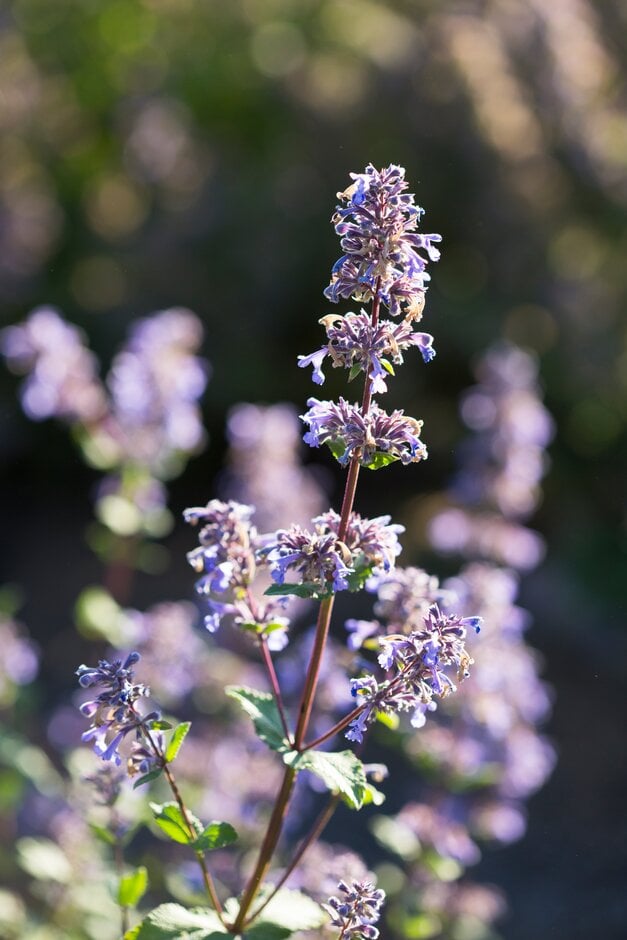Nepeta grandiflora 'Bramdean'

catmint 'Bramdean'
An upright perennial to 75cm tall, of loose, open habit, with oval, grey-green leaves to 10cm long, and long, lax spikes of deep indigo-blue flowers over a long period in summer
Size
Ultimate height
0.5–1 metresTime to ultimate height
2–5 yearsUltimate spread
0.1–0.5 metresGrowing conditions
Moisture
Well–drainedpH
Acid, Alkaline, NeutralColour & scent
| Stem | Flower | Foliage | Fruit | |
| Spring | Green Grey Silver | |||
|---|---|---|---|---|
| Summer | Blue | Green Grey Silver | ||
| Autumn | Green Grey Silver | |||
| Winter |
Position
- Full sun
Aspect
South–facing or West–facing
Exposure
Exposed or Sheltered Hardiness
H6Botanical details
- Family
- Lamiaceae
- Native to GB / Ireland
- No
- Foliage
- Deciduous
- Habit
- Bushy
- Genus
Nepeta can be annuals or, more commonly, perennials, with paired, usually aromatic leaves, and terminal spikes or panicles of 2-lipped, tubular flowers
- Name status
Accepted
How to grow
Cultivation
Grow in any well-drained soil in full sun
Propagation
Propagate by softwood cuttings in early summer or propagate by semi-ripe cuttings in early autumn or by division
Suggested planting locations and garden types
- City and courtyard gardens
- Coastal
- Cottage and informal garden
- Gravel garden
- Wildlife gardens
- Flower borders and beds
- Wall side borders
Pruning
Trim after flowering to keep the plant bushy and compact
Pests
Diseases
May be susceptible to powdery mildews in dry summers
Get involved
The Royal Horticultural Society is the UK’s leading gardening charity. We aim to enrich everyone’s life through plants, and make the UK a greener and more beautiful place.
